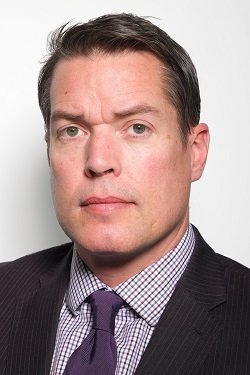Patrick McAdams, Investment Director at SL Investment Management, was a founding member and first Chairman of the European Life Settlement Association. McAdams spoke to Life Risk News to explain the genesis of the organisation and his hopes for the future.
****
LRN: Patrick – you were part of the founding of ELSA in 2009 but the Life Settlement industry is based in the United States. Why did you think that an association for European firms was necessary?
McAdams: Prior to ELSA’s formation, the only association in existence focused solely on U.S. life settlements was the Life Insurance Settlement Association (LISA). LISA is based in the U.S. and most of its members at the time were also U.S. based and primarily concerned with the sourcing of policies from U.S. policyholders. As a result, LISA’s activities/initiatives largely centred on policy procurement. However, European investors had been supplying the bulk of the capital used to acquire U.S. policies during the 00s and many of these investors felt that issues important to them were being ignored. Consequently, the idea of ELSA was born from the need for investors in Europe to have a voice via an association singularly focused on issues important to them such as transparency, education, conflicts of interest and best practices, to name but a few.
LRN: What were some of the teething troubles in the first couple of years and have they been ironed out?
McAdams: With any new initiative there are always going to be problems – it goes with the territory. With the formation of ELSA, the fundamental issue was getting enough like-minded parties onboard and commercially committed to make it happen. We were fortunate enough to work with Paul Winner, of PWCL Consulting, at the time, and he was instrumental in bringing together the founding members and getting us all on message. Once this was achieved, the challenge was getting our message out there to a captive audience. Arguably easier in today’s world of LinkedIn and Twitter, but a task not to be underestimated 12 years ago. I’m glad to say that these initial teething problems were successfully ironed out, and the association has continued to go from strength to strength, with over 30 members today.

LRN: What are ELSA’s accomplishments during your tenure as Chair of which you are most proud – and why?
McAdams: Similar to other young and evolving markets, the life settlement market has been plagued by subpar practices from a handful of bad actors with little regard for the interests of investors. To make matters worse, many investors considering an investment in a life settlement product either did not have access to sufficient resources to make an educated assessment or the product provider failed to provide the investor with appropriate and relevant levels of transparency and information – or both. As a result, I sadly witnessed, on multiple occasions, investors making poor investment decisions which inevitably resulted in disappointing investment performance. From this experience came my strong desire to provide investors with the requisite resources to make sound investment decisions and to recognise both good and bad practices in the market. This initiative is today known as the ELSA Code of Practice, to which all ELSA members must sign up to when joining the association. Now in its sixth edition, the Code of Practice is a must read for any investor considering an investment in life settlements.
LRN: You’ve stayed close to the organisation since your time as ELSA Chair, of course. Now that the Life Settlements industry has matured somewhat, what are the current challenges facing the organisation and the industry?
McAdams: From an investor perspective, the life settlement industry is in a far better place than when ELSA was founded. I confidently believe that ELSA’s existence and that of the Code of Practice has played a major part in significant improvements to the investor experience. That said, challenges and issues remain and as a result ELSA is now more relevant than ever. The last few years have been a boomtime for the market, with significant capital flows putting downward pressure on yields and motivating the supply side to find more policies as transaction volumes continue to increase. However, although far fewer in number than historically, bad practices persist. Investors were unfortunately reminded of this recently when a large open fund was found to be significantly overvaluing its portfolio when redemptions forced policy sales. There’s a very good reason why the Code of Practice has a section devoted to valuation.
LRN: And what about the opportunities?
McAdams: Thankfully opportunities far outpace challenges. The primary opportunity right now is that this market has fantastic growth potential. Now more than ever, investors seek non/low-correlated investments that still provide attractive performance. This demand for policies, which is expected to increase even further over this decade, can be satisfied by a substantial untapped supply of policies – many of which are owned by policyholders unaware that their policy can be sold and provide a living benefit. Lack of awareness, favourable U.S. senior population demographics and growing investor demand means this market is primed for significant expansion.
LRN: The Life Settlement industry, like all others, is beginning 2022 against the backdrop of heightened uncertainty due to Covid-19, although, at press time, there is continuing positive news around hospitalisation and mortality rates. What lessons have Life Settlement industry participants learned from the pandemic so far?
McAdams: You may find this surprising, but I believe the biggest learn from Covid-19 is that life settlement transactions can be undertaken effectively in a virtual environment. Historically, the process of selling your policy involved a lot of face-to-face interactions; in particular, notarisations. Faced with lockdowns and policyholders uneasy about leaving home, the market quickly pivoted to online notarisation and video/digital verification of policy transactions and related documentation. As for the pandemic itself, I believe the case remains that it is virtually impossible to predict when the next one might strike, how virulent it will be and how it might impact the life settlement cohort.
LRN: Finally, Patrick, what’s your message to the industry for 2022? What does the life settlement industry need to improve on, and what provides you with encouragement?
McAdams: My message is simple: It’s all to play for. The life settlement market has huge potential on all sides and for all participants, including investors, policyholders and market service providers. The one area I would like to see improvement on in the industry is for market service providers to continue to hold each other accountable, and to continue to drive forward on transparency and standards. On too many occasions in recent years there have continued to be instances of bad practice in the market, but human nature can be to take the easy option and stay quiet. What encourages me the most is that the market has demonstrated an ability to adapt, evolve and overcome; characteristics that will serve it well in the years to come.
Patrick McAdams is Investment Director at SL Investment Management

